Zoic Studios turns on the switch for aquatic time travel in MGM and Paramount’s Hot Tub Time Machine 2, starring Rob Corddry, Craig Robinson, Clark Duke and Adam Scott. Led by VFX Supervisor Rocco Passionino, who was on location for the shoot in New Orleans, LA, Zoic crafted 225 VFX shots that encompass a wide array of visual effects to amplify the comedy including futuristic matte paintings, high-tech graphical interfaces for a number of devices and dynamic vortexes of light and water. Passionino and the Zoic Vancouver office worked closely with director Steve Pink to create the futuristic ideology for the film.
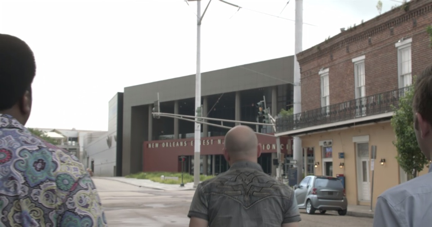
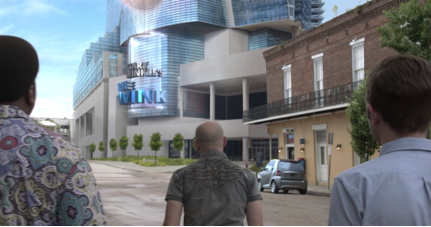
One of the most crucial effects for the sci-fi adventure was the water vortex that would serve as their mode of transit to the future from their magical hot tub. To intensify this time portal for the sequel, the Zoic team crafted a water vortex that becomes a sustained column of water and light. Passionino worked with Cinematographer Declan Quinn to create an animated LED light system to simulate the interactive light from the water vortex that would later be augmented in Post.
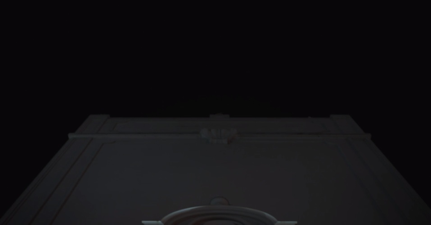
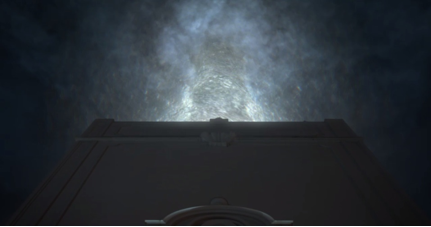
The CG team utilized a wide array of tools and software to delve into the dynamics and water solutions involved with creating the water vortex. Once the main column of the vortex was created using Realflow, additional elements of foam, splashes, droplets, blobs, steam, mist and debris were created in Maya with Phoenix, Fury and Vray, then added in compositing to create the shaft of the vortex. Additional render passes for subsurface, refraction, depth, luminosity and light rays were created along with an RGB lighting utility pass to give further flexibility for the compositors to light the CG in 2D. To connect the chaos on the ground to the sky, a swirling mass of volumetric clouds were created with Phoenix and rendered in Vray.
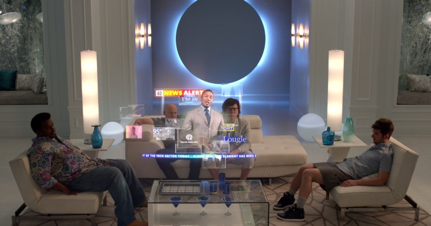
Another central effect for the comedy was the visualization of a character’s existence being threatened due to the time travel. To show Lou (Corddry) flickering—in threat of not surviving long enough to reach 2024—clean plates were shot on set for each of the scenes where the effect would be needed and moments where the actors crossed. In post production, compositors painted sections back in that were needed and added multiple layers of static, distortion and chromatic aberration to the images to create the final effect.
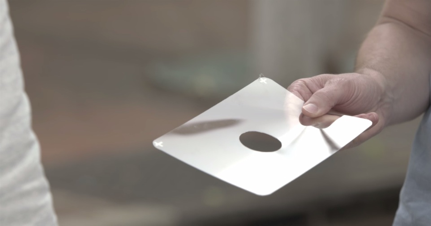
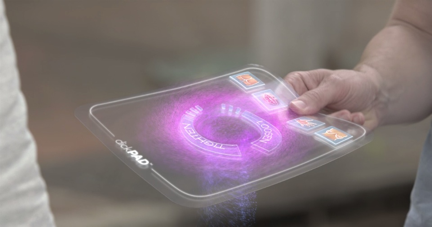
Since this chapter of rambunctious time traveling zooms forward to the future, the Zoic team also crafted a number of holographic elements, including a holographic television and holographic phone communications. To create a television that would cater to the ever-dwindling attention spans of viewers, Zoic worked with Pink to create a holographic television that would allow for an endless number of channels to display simultaneously. Motion Graphics designer Jeremy Price crafted the multi-planed interface and composited the content into the windows to create an interactive and holographic device that was activated by touch. This design was also used for telecommunications throughout the film.
Credits:
Senior VFX Supervisor: Rocco Passionino
Visual Effects Art Director: Syd Dutton
Visual Effects Supervisor: Ralph Maiers
Executive Producer: Kristen Leigh Branan
VFX Producer: Chris Roff, Andrew Cox, Lauren Weidel
VFX Coordinator: Ryan Kuba
Compositing Supervisor: Kenton Rannie
Compositing Lead: Patrick Kavanaugh
Compositors: Graeme Baitz, Kornel Farkas, John Fukushima, Brian Hanable, Jeremy Price
Motion GFX Artist: Ryan Uhrich
Matte Paintings: Ashish Dani
CG Supervisor: Richard Patterson
CG FX Artists: Mike Rhone, Rav Brar, Martin Halle
Rotoscope Supervisor: Riley Liao
Rotoscope Artists: Hanna Kim, Einer Lopez, Yoshi Taniguchi, Taylor Thompson
Tracking Supervisor: Ryan Lorie
Tracking Artists: Michael Bienz, Robert Cvengros
CG Modelers: Robert Smith, Fumi Mashimo
CG Riggers: Paxton Gerrish